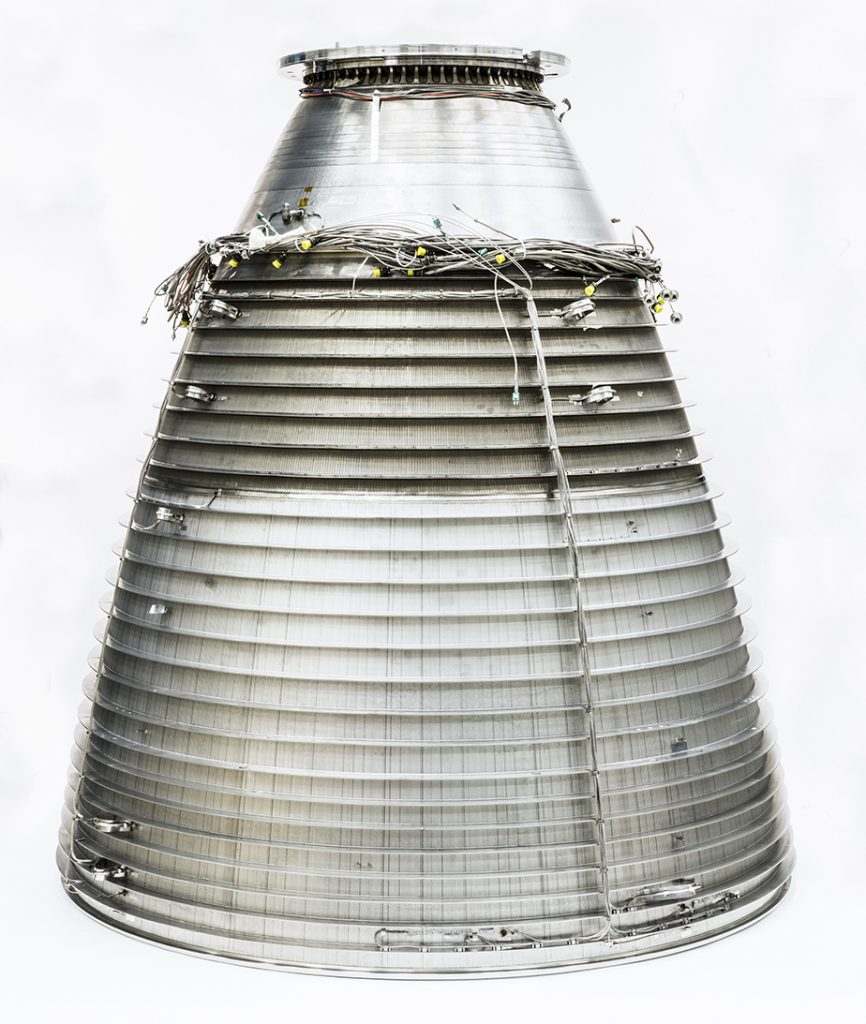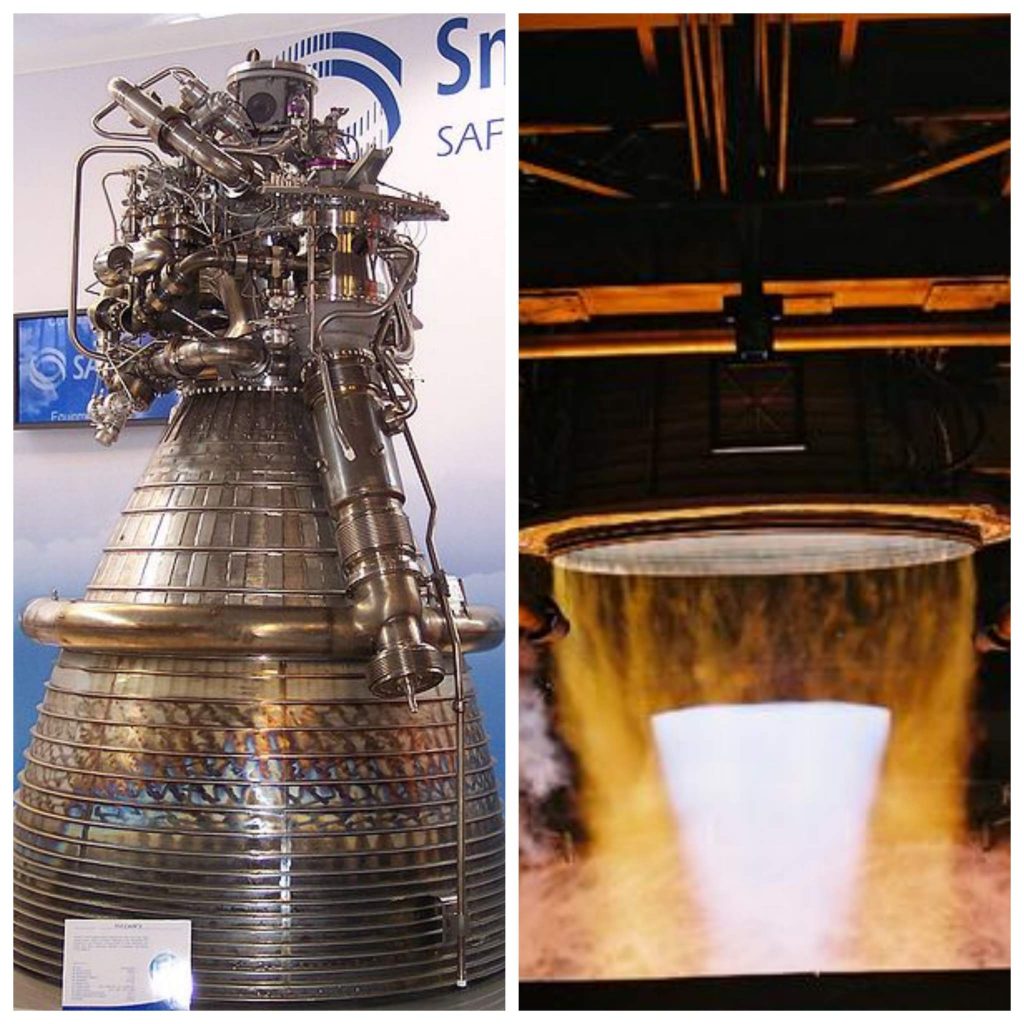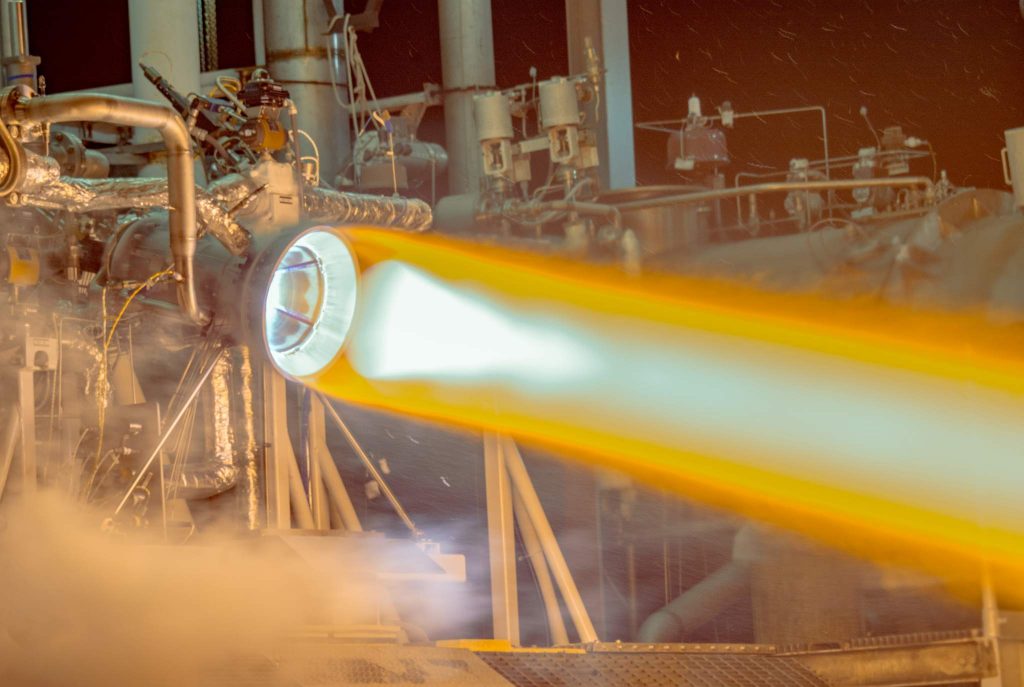The next generation of spacecraft, looking beyond 2030, will be powered by a rocket engine using breakthrough technology.
The Prometheus is a liquid oxygen (LOx)-methane engine. It is reusable, cheaper than hydrogen alternatives, and under development to dramatically reduce the cost of rocket production.
Prototyping of the engine started 2015, making use of metal 3D printing methods. Its predecessor, the Vulcain 2.1 model – from 2014 – was developed by the company then known as Snecma and now called Safran. The Vulcain contains 3D printed structural components.
Made by GKN Aerospace, the rocket nozzle of Vulcain 2.1 is the first of its kind to be manufactured using laser welding and laser metal deposition additive manufacturing. The nozzle is a whopping 2.5 meters in diameter.

The Ariane 6 SWAN nozzle was delivered last week to Airbus Safran Launchers. Next year GKN plan to open a dedicated manufacturing center of excellence in Trollhättan, Sweden.

Building on technology developed over six generations of these engines, the Prometheus is tipped to be the first engine to make full use of design complexities afforded by 3D printing.
Partnerships with the European Space Agency
The ArianeGroup, a consortium of rocket builders equally owned by leading aerospace corporations Airbus and Safran, has won a contract from the European Space Agency (ESA) to develop the Prometheus. Budget for the project is above €80 million.
With a goal to cut production costs down to just €1 million, versus the around €10 million for an engine of its kind, the company count 3D printing as one of the key methods of production. This is bolstered by the addition of strategic partners including Italian aerospace company Avio and GKN Aerospace of Sweden. Both enterprises are active in the application of additive manufacturing for end-user parts.
Ready for liftoff
AraineGroup’s contract with the ESA was signed at the recent 2017 Paris Air Show.
Also at the Paris Air Show, Renishaw, Safran, Dassault Systèmes, Boeing and BeAM showcased advances in additive manufacturing.
Arguably a star of the show was the CFM International LEAP engine. The LEAP engine – built under a joint venture between GE and Safran – features 19 3D printed fuel nozzles. CFM took $27 billon in orders during the bi-annual aerospace event.
ArianeGroup’s exhibit at the show included models of previous generation Ariane heavy lift launch vehicles. The latest Ariane 5 rocket, powered by the Vulcain, was recently launched for the sixth time this year from the Guiana Space Center in French Guiana.

Flight critical 3D printing for rockets
In 2016, Charmeau suggested that the Prometheus could “one day” find use in the Ariane 6, scheduled for launch in 2020. Announcing the partnership with the ESA, Alain Charmeau, CEO of ArianeGroup, explains,
This signing underlines our determination to prepare now for the future of Europe’s launchers beyond 2030, while pulling out all the stops to ensure an Ariane 6 first flight in 2020. Those two approaches based on continuous competitiveness and innovations are perfectly complementary.
Though further details of the method used are so far under wraps, high-stress metal components for use inside rocket engines are already made using 3D printing by several commercial aerospace companies.
For example, the safety thrusters in SpaceX’s SuperDraco engine are 3D printed. SpaceX’s first passenger flight scheduled for 2018.
Last month New Zealand saw the successful launch of Rocket Lab’s Electron 3D printed Rutherford engine. Furthermore, Aerojet Rocketdyne’s RL10 rocket has 3D printed thrust chambers.

Remaining “in the global race for access to space”
Given the expertise of members of the AraineGroup, it is highly probable that 3D printing will play an important role in the development of the Prometheus engine.
Working with electron beam melting (EBM) technology from Arcam, Avio, also produced the high pressure turbine blades used in the GEnX jet engine series.
As mentioned, Safran are in a joint venture with GE for LEAP engine production, and have recently extended their access to advanced manufacturing technology with an investment in Prodways.
GKN recently tested a 3D printed titanium optical ice detector (OID) probe and Airbus are using additive manufacturing for the forthcoming Beluga XL and A330neo airplanes.
Elaborating on the Prometheus production, Charmeau adds,
The engine is indeed a vital element of the launcher. Preparing the technological breakthrough resulting in an engine about 10 times less costly to build than the current Vulcain®2 engine will allow us to remain in the global race for access to space I therefore thank ESA and its member States for their contribution to the development of tomorrow’s European technology.
In addition to 3D printing, the company also plans to harness “predictive maintenance and digital control” for the success of the engine’s new design.
Stay up-to-date with the latest 3D printing news and research by subscribing to our newsletter and following us on twitter and Facebook.
Featured image: November 2016 launch of the Ariane 5 rocket, powered by a liquid oxygen-methane Vulcain engine. Photo via ArianeGroup


